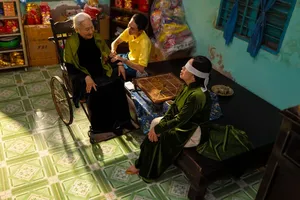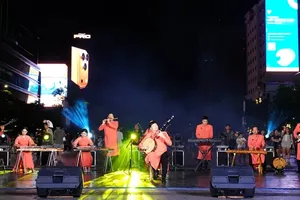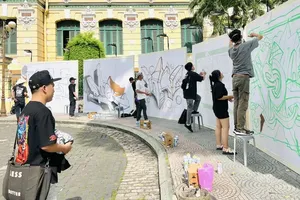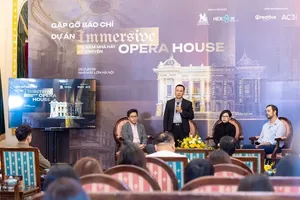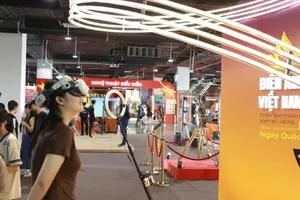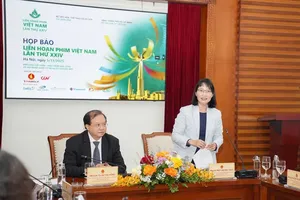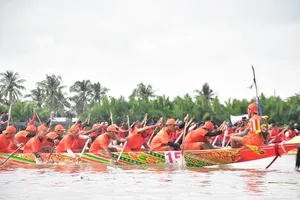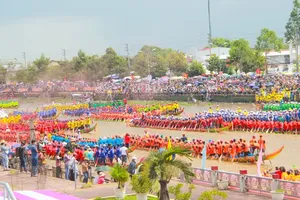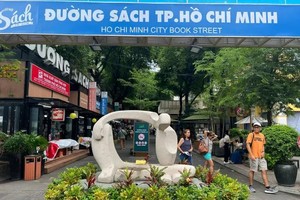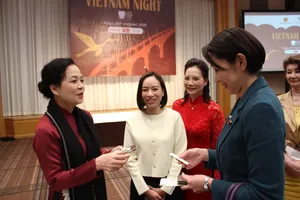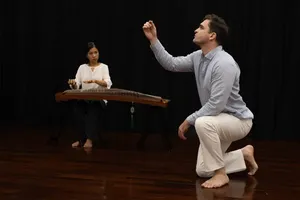The 2025 edition attracted over 4,000 publishers from 90 countries, welcoming hundreds of thousands of visitors.
Opportunity to showcase cultural identity
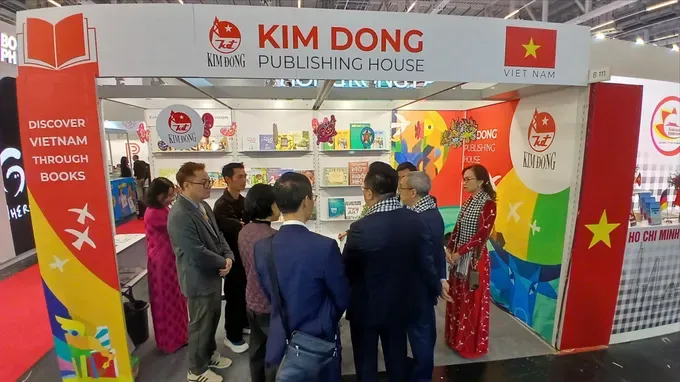
This year’s Frankfurt Book Fair centers on the intersection of creativity and commerce, with a highlight being the Guest of Honour program featuring the Philippines. The country is celebrated under the slogan “The imagination peoples the air,” inspired by the iconic work “Noli Me Tangere” by Filipino writer José Rizal (1861–1896).
Through the Philippines’ showcase at this year’s book fair, Vietnam can gain valuable insights into how countries leverage global platforms to promote cultural heritage, advance translation initiatives, and build international cultural bridges.
As the “Guest of Honor,” the Philippines transformed the book fair into a vibrant showcase. The 2,000-square-meter Philippine Pavilion in the Forum area was designed as a “floating archipelago,” featuring interactive zones and presenting over 100 authors and 50 artists.
Beyond the book fair, the Philippines organized a series of off-site events, including the Oculus exhibition at the Heidelberger Kunstverein in Berlin, exploring colonial heritage through imagery and performance; the Pagtatahip performance at the Humboldt Forum in Berlin, evoking sounds from anti-colonial poetry to traditional lullabies; the New Beginnings photography workshop at Fotografie Forum Frankfurt, where artists shared personal identities through the lenses of migration and labor; and the Philippinische Kino film festival at the Deutsches Filminstitut (German Film Institute), showcasing the history of Philippine cinema from the 1970s onward.
The Philippines’ showcase at the Frankfurt Book Fair demonstrated that cultural promotion must be multidimensional, blend historical heritage with contemporary creativity, and leverage technology to make audiences active participants in local culture. The country also invested heavily in parallel initiatives, including collaborations with German museums to present exhibitions on Philippine architecture and the “Jeepney Journey” project, bringing Manila’s iconic jeepneys to Frankfurt streets to create a cultural space featuring music, cuisine, and storytelling. Together, these efforts transformed the Philippine Pavilion from a conventional “book-selling booth” into a dynamic cultural bridge, where culture becomes a sustainable commercial and creative asset.
Success comes from long-term investment

Not only the Philippines, but other countries also leveraged the Frankfurt Book Fair to effectively promote their cultures. Saudi Arabia transformed its pavilion into a “hub of exchange,” where European publishers discussed collaborations, showcased books on Islamic heritage and contemporary creativity, and drew crowds through live cultural performances.
Similarly, Kazakhstan’s pavilion served as a “literary heritage hub,” focusing on connection activities, book signings, and workshops, helping its national literature reach European markets. Azerbaijan stood out with a pavilion featuring literary readings and photography exhibitions, promoting the country’s image through the lens of literature. These examples show that even without the “Guest of Honor” title, smaller countries can succeed by highlighting their unique and distinctive cultural aspects.
From the experience of the 2025 Frankfurt Book Fair, several key lessons emerge for promoting national culture on the global stage. Countries can maximize impact by embracing multimedia integration, not only books but also film, music, and exhibitions, to create a comprehensive cultural appeal. Prioritizing translation and copyright is essential, as the fair represents the world’s largest “rights marketplace,” where nations negotiate tens of thousands of publishing rights. Moreover, long-term strategic planning is crucial, ensuring that cultural promotion extends beyond the fair itself, resonating through a diverse range of cultural initiatives.
The 2025 Frankfurt Book Fair has underscored that cultural promotion is a strategic investment. For nations with rich cultural identities like Vietnam, the experience suggests that early investment in interactive pavilions, international collaborations, and content diversification, from traditional to contemporary and from handicrafts to technology, is crucial.
In future editions, Vietnam should not only pay attention to showcasing books but also to presenting cultural products and activities so that visitors to Vietnam’s pavilion encounter not just exceptional literature but also lasting impressions of its cultural heritage. Elements such as tea ceremonies, Dong Ho paintings, “Do” paper-making, and Don Ca Tai Tu Nam Bo (southern amateur music) performance, alongside iconic items like the Non La (traditional Vietnamese palm-leaf conical hat), Khan Ran (Vietnamese traditional checkered black and white shawl), and lotus tea… can captivate visitors and leave a lasting memory of Vietnam. After the fair, these experiences help bring the country and its people closer to a global audience.

